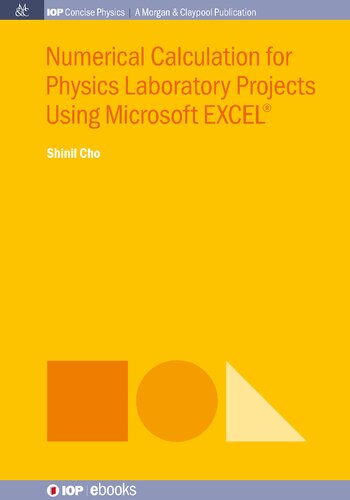

Most ebook files are in PDF format, so you can easily read them using various software such as Foxit Reader or directly on the Google Chrome browser.
Some ebook files are released by publishers in other formats such as .awz, .mobi, .epub, .fb2, etc. You may need to install specific software to read these formats on mobile/PC, such as Calibre.
Please read the tutorial at this link: https://ebookbell.com/faq
We offer FREE conversion to the popular formats you request; however, this may take some time. Therefore, right after payment, please email us, and we will try to provide the service as quickly as possible.
For some exceptional file formats or broken links (if any), please refrain from opening any disputes. Instead, email us first, and we will try to assist within a maximum of 6 hours.
EbookBell Team

0.0
0 reviewsThis book covers essential Microsoft EXCEL®'s computational skills while analyzing introductory physics projects.
Topics of numerical analysis include; multiple graphs on the same sheet, calculation of descriptive statistical parameters, a 3-point interpolation, the Euler and the Runge-Kutter methods to solve equations of motion, the Fourier transform to calculate the normal modes of a double pendulum, matrix calculations to solve coupled linear equations of a DC circuit, animation of waves and Lissajous figures, electric and magnetic field calculations from the Poisson equation and its 3D surface graphs, variational calculus such as Fermat's least traveling time principle and the least action principle. Nelson's stochastic quantum dynamics is also introduced to draw quantum particle trajectories.